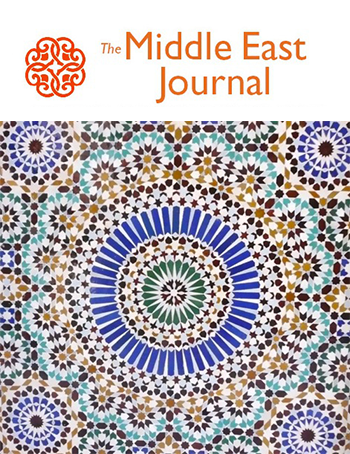
MIDDLE EAST JOURNAL
Book Review
Gerals Butt has written a lively, intelligent and highly readable history of Gaza , about which precious little exists, especially in English. This work treats Gaza not as a violent, poor and unwanted backwater of the Middle East , but as one of the oldest living cities in the world, with a rich and contentious history. As such, Butt's account provides a much needed correction and fills a largely untouched void.
That Gaza has escaped serious historical attention is astounding. For many, the history of the area begins with the birth of the Gaza Strip in 1948. The earliest knowledge of Gaza , however, dates to 3300 BC, when small groups of Chalcolithic hunters and farmers established communities in nearby hills. Gaza 's history is not only long but turbulent, and its strategic geographical position has clearly shaped its very vibrant, even elegant, history. From its ancient beginnings down to the present day, the city of Gaza has been the site of continuous invasion, foreign domination, local resistance, and internal renewal.
Gaza's record past dates back to the earliest day of the Pharaonic dynasties, whose domination of the Philistines coast, and of Gaza in particular, was crucial to dynastic sovereignty and survival. The Egyptian Pharaohs understood the military and economic significance of the city of Gaza and its environs. Situated on the Via Maris, a road that ran from along the coast of Palestine and , with a branch leading eastward to Damascus and Mesopotamia, Gaza served as a critical link between and these other empires of antiquity both for trade and for conquest. Indeed, during Biblical times, Gaza provided a crucial outlet to the Mediterranean for overland trade between the Far East - and - and the countries of the Mediterranean basin, as well as for exports from the Red Sea region and from southern Arabia , a fact reflected in the writings of the classical geographers, Strabo and Pliny.
These important commercial routes crossed into Gaza and were greatly dependent upon the markets and ports of the city for their success. As the last town visited before entering the Sinai, and the first town reached after leaving it, Gaza was of crucial importance to the conqueror attempting to invade from the north or Palestine from the south. In ancient times of war, Gaza served as the main tactical base for 's armies marching towards Canaan and , and in time of peace, Gaza, with its abundant water supply and natural resources, was the key commercial outpost and provisioning center for caravans traveling between Asia and Africa . Whoever controlled Gaza , therefore, could shape the nature of interregional trade at the time. A noted historian of the city, Martin A. Meyer, wrote, "as long as the center of history remains in the Mediterranean world, the fate of nations was mirrored in that of this solitary city." 1
After briefly tracing Gaza's earliest beginnings, Butt provides a succinct but beautifully detailed account of Gazan life under the rule of Canaan and Philistine, Assyria, Babylonia and , and Rome, and Byzantium . The arrival of Islam is described and followed by a discussion of the Crusades and of Ottoman domination. Gaza 's modern history really begins with its brutal destruction and depopulation during World War I, a history that was sadly and irreversibly shaped by the subsequent imposition of the British Mandate and solidified by ensuring Egyptian and Israeli occupations. Indeed, Gaza 's present debilitation seems almost antithetical when viewed against its remarkable history of resilience, growth and resistance.
Yet, as Butt poignantly reveals, Gaza today remains as vulnerable and frightened as it was in 1486 BC when a Hittite invasion seemed imminent: "The city weeps and her tears are running, and there is no help for us...We have been sending to the King... of Egypt for twenty years; but not one word has come to us from our Lord" (p. 23).
Review by Sara Roy
Middle East Journal - vol. 51 issue 1
Sara Roy is a research scholar at the Center for Middle Eastern Studied, Harvard University and the author of The Gaza Strip: The Political Economy of De-Development (Washington, DC; Institute for Palestine Studies, 1995).
1.History of the City of Gaza from the Earliest Times to the Present Day (New York: Columbia University Press, 1907), p.4.


